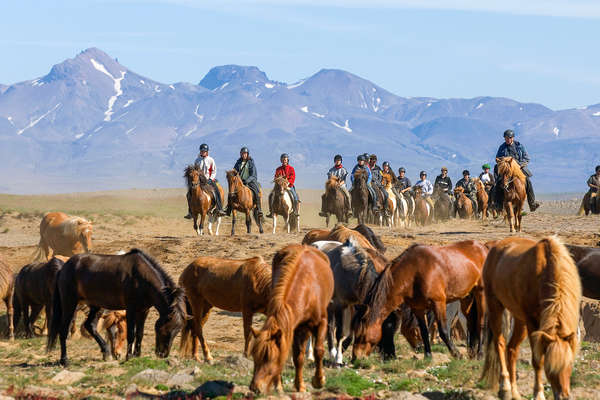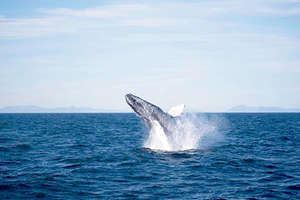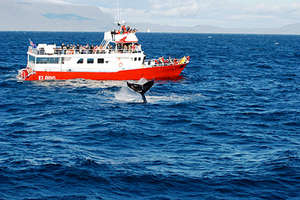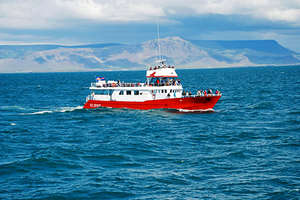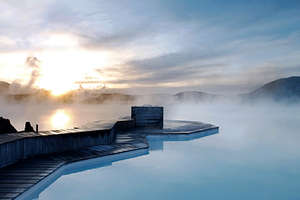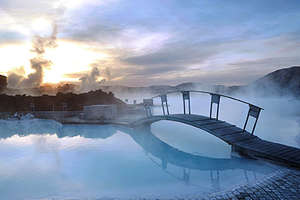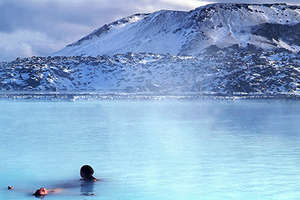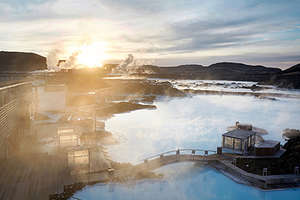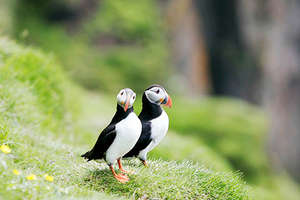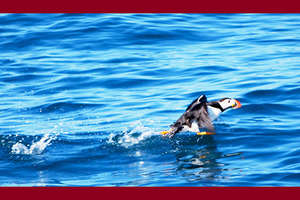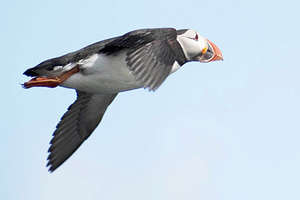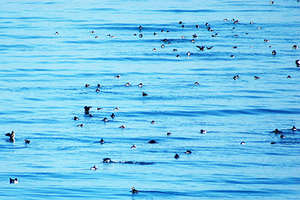
From the horse’s mouth
Itinerary
Highlights
- Perfect choice if you want to see as much as possible of the unspoilt Icelandic highlands.
- The Kjolur trail follows a historical route originating from the first democratic foundations of the country.
- Visit the sights of the famous Golden Circle including Gullfoss waterfall, Geysir and Thingvellir lake.
- Experience the extra gait of the Iceland horse - the tölt - fast, smooth and comfortable, it's a unique feeling.
- Ride two or three horses each day and find one or two special favourites amongst the herd of free-running horses
Dates & prices
Price details
- Rates are per person, based on sharing communal rooms. There is no single supplement as you should be prepared to share.
- Airport transfers and additional nights in Reykjavik are not included. See here for more info on how to get from the airport to the city centre.
- Groups usually comprise from 6 up to 20 international riding guests plus guides. As you are riding with a herd of loose horses, it is easy to forget that there are other riders amongst them too and so the group size is never a problem.
- This route runs from the South to the North one week and from the North to the South the following week. Both directions cover the same ground and offer the same spectacular views.
- All departures are confirmed regardless of the number of riders on the tour.
- Vegan and/or Gluten Free diets will incur on an extra supplement of around £90/€100/$110 per person.
- Children from 9 years of age can be accommodated provided they are good riders, with parental consent and a good riding level
- Discounts are available for families of 3+ (two parents and one child aged 12+), and for children between the age of 9 and 12. Please contact us.
- Rider weight limit is 110kg/17,3 st/242lb
Please Note
The itinerary may be modified at anytime for security reasons, meteorological or events beyond our control such as blocked roads, rivers in flood, drought, strikes and local holidays. Equus Journeys, our local partners and their local guides will always strive to find the best solution and will alter the itinerary as needed.
The names of the hotels and accommodation are given for information only and depending on availability, they may be modified without notice and replaced by another of a similar standard.
Price includes
Support Team
2 Icelandic tour leaders
2-4 assistants in charge of the free herd.
Logistic
1 cook
2-3 horses per rider equipped with saddle and bridle
Inland transports
Accommodation
Meals
Extra equipment
Price doesn't include
Meals
Lunch and dinner on day 8 are not included
Special diet supplement - please see above
Transport
International flights
Extra
Insurance
Optional
Accommodation
Equestrian info
Horses
You will ride with a group of loose horses and change mounts once to twice a day, to preserve the horses strength.
Guide & local team
Minimum riding ability
Minimum riding ability
Rider weight limit is 110kg/17,3 st/242lb
Pace
Tacking ability and participation
Trip conditions and Requested experience
Having previous experience of riding a trail of several days would be an advantage but it is not compulsory. Guests who do not ride regularly are requested to get fit prior to the ride. It is of particular importance to ensure you are comfortable and balanced when riding at speed across rough terrain and open spaces.
Equestrian equipment
Hard hats are mandatory. We recommend our riders to wear a helmet to the correct standard and you should bring your own to ensure a proper fit.
Travel info
Comfort
Please understand that accommodation in the highlands is always basic, with little privacy, small rooms and limited showers.
Meals
You prepare your own picnic lunch at breakfast time.
Vegetarian meals are available if requested when booking. Vegan and Gluten free diets can be accommodated at an extra cost.
Alcoholic beverages are not included in the tour price and are hard to get in the highlands. They can be bought at a reasonable price in the Duty-Free Store at Keflavik Airport upon arrival.
Climate
Tips
Packing list
There are some important packing considerations for a riding holiday in Iceland. The Icelandic horses have had no contact with other equine species and are not vaccinated. They do not have any resistance to diseases which are common elsewhere in the world and so it is important to take precautions to prevent the spread of infections.
- You should NOT take the following products into Iceland: saddles, bridles, halters, saddle pads, whips, brushes or any leather products which have been in contact with a horse.
- Your riding clothes must be thoroughly cleaned at least 5 days before departure (riding breeches, jumpers, coats, gloves) and should be washed in temperatures of at least 40c.
- Items which cannot be washed at 40c, such as riding hats or leather boots must be thoroughly disinfected at least five days before departure:
1. Wash in detergent.
2. Dry thoroughly
3. Spray with a 1% solution of Virkon detergent (10g per litre of water)
For more details please visit the Icelandic veterinary authority website: www.mast.is/english/frontpage/import-export/import/ridingequipment
Head
- A riding helmet is compulsory and we recommend that you take your own to ensure a correct fit.
- A flyhat to wear over your helmet may be a good idea in the summer months, when flies can be be an issue
- Sunhat for when not riding
- Sunglasses - with a cord attached so they don't fly off when riding
- Buff or bandana for protecting your neck and face from the sun, wind or rain
- Warm hat for cold evenings/days
Upper body
- Thermals in case of cold weather
- Long sleeved shirts provide protection from the sun or extra warmth
- Down jacket or gilet for cold evenings
- T-shirts
- Lightweight fleece or jumper
- Warm polar fleece or equivalent (plus a spare in case one gets wet)
- Waterproof jacket - rain can be difficult to predict and it's better to be prepared. In the mountains the weather can change quickly
Legs
- Lightweight, comfortable riding trousers or jodhpurs - we recommend riding in them at home before taking them on holiday to ensure they don't rub. Take two pairs
- Waterproof over trousers
- Casual clothes for the evenings (jeans or walking trousers)
- Thermal trousers
Hands and Feet
- Comfortable riding boots, preferably waterproof. We recommend short boots with half chaps but you may wish to take long chaps. We don't recommend taking your favourite long leather boots in case they get damaged
- Lightweight shoes or trainers for the evenings
- Sandals/flipflops
- Several pairs of warm socks
- Gloves - your hands are particularly exposed to the sun, wind or rain whilst riding
Nightwear
- Sleeping bag - make sure it is warm enough for chilly nights.
- A small camping pillow
- Slippers (you will have to remove your shoes inside the accommodation)
- An eye mask can help with the 24hr daylight
- Towel
Other useful items
- Swimsuit - for hot tubs
- Camera and high capacity memory card. Spare battery
- Bumbag for carrying your camera and small items whilst riding
- Headtorch or small torch for moving around at night - bring spare batteries and bulbs
- Water bottle (2 litres or 2 x 1 litre)
- Wet Wipes or equivalent (for when washing facilities aren't available)
- Ear plugs (for light sleepers)
Medical kit
- Sunscreen and lip balm - should be high factor
- Insect repellent, deet based is preferable
- Any medication you regularly take
- Blister plasters in case of any rubs
- Antiseptic cream, plasters, aspirin, anti-histamine, insect-bite salve etc...
- Spare prescription glasses/contact lenses
- Eye drops
- Imodium or similar anti-diarrhoea medication
- Re-hydration sachets
- Antiseptic wipes
- Handwash gel
Our Recommendations
- Backpacks cannot be worn whilst riding. We recommend a small bumbag or a coat with pockets so that you can carry small items with you during the day (camera, sunscreen, lipbalm etc)
- We recommend travelling in your riding boots and carrying your hat and some riding clothes in your hand luggage - then if your luggage goes astray you are still able to ride!
- Carry a copy of your passport and insurance documentation with you.
Sustainable tourism
- Travel light. It's a little known fact, but the lighter you pack, the better for the environment as heavy bags will produce higher emissions (when flying a plane or driving a car!).
- Reduce plastic waste. Take your favorite reusable bottle with you. Avoid single-use bags, cups, or straws.
- Preserve nature. Always take your rubbish with you during the ride and recycle them. Leave all the flowers or plants as you found them, and never get too close when observing wildlife. Make sure to use eco-friendly products such as body wash or laundry detergent (if camping) to protect both your skin and the environment.
- Choose your experiences carefully. Respect animal life by not participating in any activities that abuse wild animals (shows, elephant rides, etc.).
- Support local populations. Buy local handicrafts, be respectful of customs, and learn about the culture of local communities.
- Share! Raise awareness among your family and friends about sustainable tourism.
Did you know?
Did you know?
The
Kjolur trail is an ancient highway running through the Icelandic highlands,
which has been used ever since the Vikings settled in the ninth century. During
the 12th and 13th centuries, small armies would use the route to race north or
south to confront their enemies.
There
are many tales of disaster along the route too. In 1780 two brothers from
Reynisstadur farm froze to death with their newly bought sheep in a snow storm.
This place is now called Beinholl or Bone Hill due to the number of animal
bones that were found when the snow thawed.
In
the 18th century it is also rumoured that the famous Icelandic outlaw
Fjalla-Eyvindur and his wife took up residence along a portion of the road that
is now known as the Valley of Thieves.
The
riding route of the Kjolur trail follows the ancient trail, which is a lot
greener than the modern road which has now replaced it for vehicles - Route
F35. The original ancient Kjolur trail has now been renamed "Kjalvegur
hinn forni" - the ancient Kjalvegur and is closed to motorised traffic,
making it ideal for a horse riding trail.





